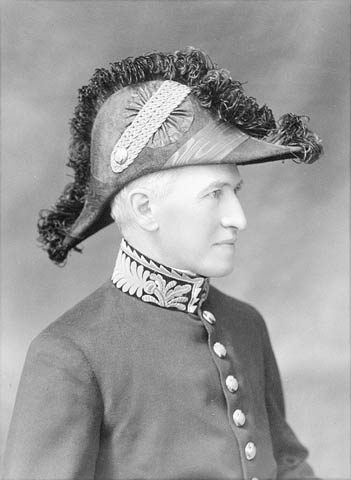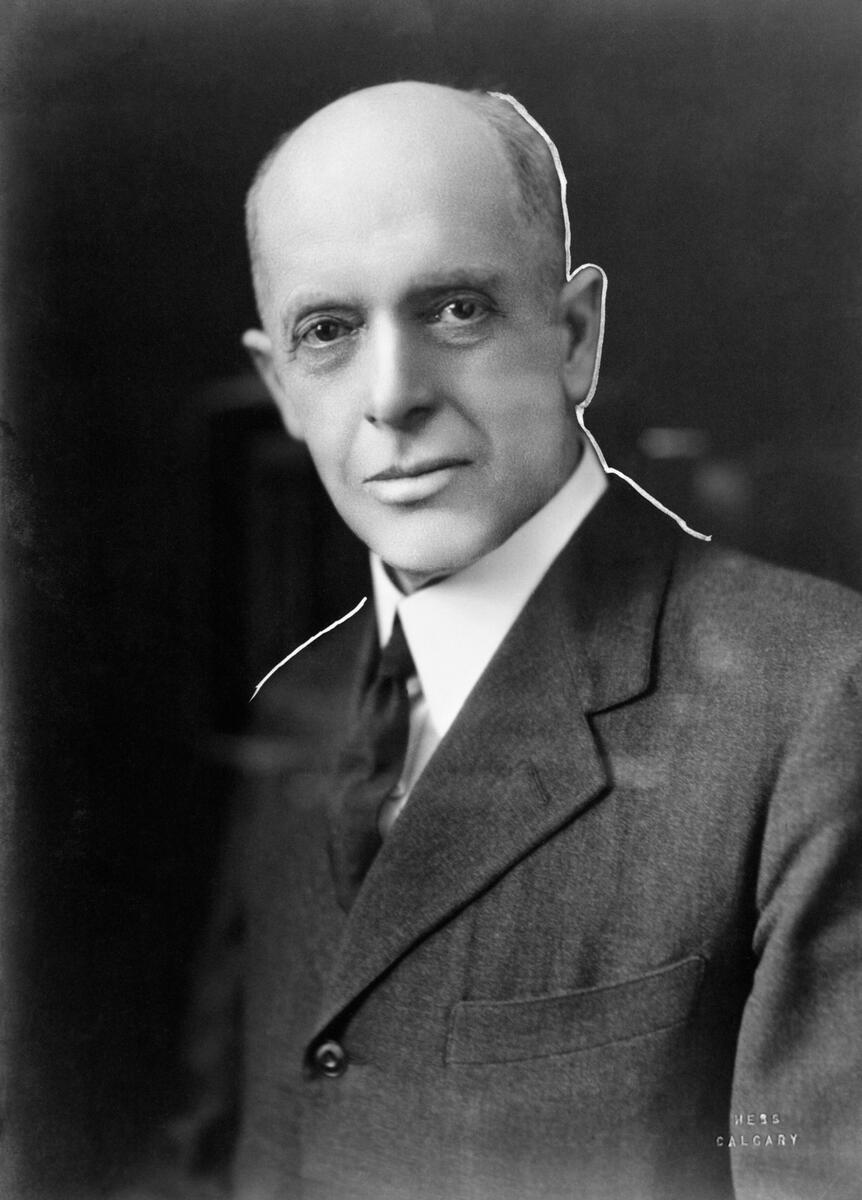|
1913 Alberta General Election
The 1913 Alberta general election was held in March 1913. The writ was dropped on 25 March 1913 and election day was held 17 April 1913 to elect 56 members to the 3rd Alberta Legislature. Elections in two northern districts took place on 30 July 1913 to compensate for the remote location of the riding. The method to elect members was under the First Past the Post voting system with the exception of the Edmonton (provincial electoral district), Edmonton district which returned two members under a plurality block vote. The election was unusual with the writ period for the general election being a very short period of 23 days. Premier Arthur Sifton led the Alberta Liberal Party into his first election as leader, after taking over from Alexander Rutherford. Premier Rutherford had resigned for his government's involvement in the Alberta and Great Waterways Railway Scandal but remained a sitting member. Sifton faced great criticism for calling the snap election, after ramming gerrymande ... [...More Info...] [...Related Items...] OR: [Wikipedia] [Google] [Baidu] |
Legislative Assembly Of Alberta
The Legislative Assembly of Alberta is the deliberative assembly of the province of Alberta, Canada. It sits in the Alberta Legislature Building in Edmonton. Since 2012 the Legislative Assembly has had 87 members, elected first past the post from single-member electoral districts. Bills passed by the Legislative Assembly are given royal assent by the lieutenant governor of Alberta, as the viceregal representative of the King of Canada. The Legislative Assembly and the Lieutenant Governor together make up the unicameral Alberta Legislature. The maximum period between general elections of the assembly, as set by Section 4 of the Canadian Charter of Rights and Freedoms is five years, which is further reinforced in Alberta's ''Legislative Assembly Act''. Convention dictates the premier controls the date of election and usually selects a date in the fourth or fifth year after the preceding election. Amendments to Alberta's ''Election Act'' introduced in 2024 fixed the date of ... [...More Info...] [...Related Items...] OR: [Wikipedia] [Google] [Baidu] |
Arthur Lewis Sifton
Arthur Lewis Watkins Sifton (October 26, 1858 – January 21, 1921) was a Canadian lawyer, judge and politician who served as the second premier of Alberta from 1910 until 1917. He became a minister in the federal cabinet of Canada thereafter. Born in Canada West (now Ontario), he grew up there and in Winnipeg, where he became a lawyer. He subsequently practised law with his brother Clifford Sifton in Brandon, where he was also active in municipal politics. He moved west to Prince Albert in 1885 and to Calgary in 1889. There, he was elected to the 4th and 5th North-West Legislative Assemblies; he served as a minister in the government of premier Frederick Haultain. In 1903, the federal government, at the instigation of his brother (who was then one of its ministers), made Sifton the Chief Justice of the Northwest Territories. After Alberta was created out of a portion of the Northwest Territories in 1905, Sifton became the first Chief Justice of Alberta in 1907 and s ... [...More Info...] [...Related Items...] OR: [Wikipedia] [Google] [Baidu] |
Arthur L
Arthur is a masculine given name of uncertain etymology. Its popularity derives from it being the name of the legendary hero King Arthur. A common spelling variant used in many Slavic, Romance, and Germanic languages is Artur. In Spanish and Italian it is Arturo. Etymology The earliest attestation of the name Arthur is in the early 9th century Welsh-Latin text ''Historia Brittonum'', where it refers to a circa 5th century Romano-British general who fought against the invading Anglo-Saxons, Saxons, and who later gave rise to the famous King Arthur of medieval legend and literature. A possible earlier mention of the same man is to be found in the epic Welsh poem ''Y Gododdin'' by Aneirin, which some scholars assign to the late 6th century, though this is still a matter of debate and the poem only survives in a late 13th century manuscript entitled the Book of Aneirin. A 9th-century Breton people, Breton landowner named Arthur witnessed several charters collected in the ''Redon_Abbey ... [...More Info...] [...Related Items...] OR: [Wikipedia] [Google] [Baidu] |
Wilfrid Laurier
Sir Henri Charles Wilfrid Laurier (November 20, 1841 – February 17, 1919) was a Canadian lawyer, statesman, and Liberal politician who served as the seventh prime minister of Canada from 1896 to 1911. The first French Canadians, French Canadian prime minister, his 15-year tenure remains the longest uninterrupted term of office among Canadian prime ministers and his nearly 45 years of service in the House of Commons of Canada, House of Commons is a record for the House. Laurier is best known for his compromises between English Canada, English and French Canada. Laurier studied law at McGill University and practised as a lawyer before being elected to the Legislative Assembly of Quebec in 1871 Quebec general election, 1871. He was then elected as a Member of Parliament (Canada), member of Parliament (MP) in the 1874 Canadian federal election, 1874 federal election. As an MP, Laurier gained a large personal following among French Canadians and the Québécois people, Québ� ... [...More Info...] [...Related Items...] OR: [Wikipedia] [Google] [Baidu] |
1921 Alberta General Election
The 1921 Alberta general election was held on July 18, 1921, to elect members to the 5th Alberta Legislative Assembly. The Liberal government is replaced by the United Farmers of Alberta. It was one of only five times that Alberta has changed governments. The Alberta Liberal Party, Liberal Party, which had governed the province since its creation in 1905, led by Charles Stewart (premier), Charles Stewart at the time of the election, was defeated by a very-new United Farmers of Alberta political party. The UFA, an agricultural lobby organization formed in 1909, was contesting its first general election. It had previously elected Alexander Moore (politician), one MLA in a by-election. Under the Plurality block voting, Block Voting system used in Edmonton and Calgary, each city voter could vote for up to five candidates. Medicine Hat also used block voting. Voters there could vote for up to two candidates. All other districts remained one voter – one vote, with the winner decided ... [...More Info...] [...Related Items...] OR: [Wikipedia] [Google] [Baidu] |
Plurality Block Voting
Plurality block voting is a type of block voting method for multi-winner elections. Each voter may cast as many votes as the number of seats to be filled. The candidates with the most votes are elected. The usual result when the candidates divide into parties is that the most-popular party in the district sees its full slate of candidates elected, even if the party does not have support of majority of the voters. The term plurality at-large is in common usage in elections for representative members of a body who are elected or appointed to represent the whole membership of the body (for example, a city, state or province, nation, club or association). Where the system is used in a territory divided into multi-member electoral districts the system is commonly referred to as "block voting" or the "bloc vote". These systems are usually based on a single round of voting. The party-list version of block voting is party block voting (PBV), also called the general ticket, which also ... [...More Info...] [...Related Items...] OR: [Wikipedia] [Google] [Baidu] |
First-past-the-post Voting
First-past-the-post (FPTP)—also called choose-one, first-preference plurality (FPP), or simply plurality—is a single-winner voting rule. Voters mark one candidate as their favorite, or first-preference, and the candidate with more first-preference votes than any other candidate (a ''plurality'') is elected, even if they do not have more than half of votes (a '' majority''). FPP has been used to elect part of the British House of Commons since the Middle Ages before spreading throughout the British Empire. Throughout the 20th century, many countries that previously used FPP have abandoned it in favor of other electoral systems, including the former British colonies of Australia and New Zealand. FPP is still officially used in the majority of US states for most elections. However, the combination of partisan primaries and a two-party system in these jurisdictions means that most American elections behave effectively like two-round systems, in which the first round ch ... [...More Info...] [...Related Items...] OR: [Wikipedia] [Google] [Baidu] |
Calgary Centre (provincial Electoral District)
Calgary Centre was a provincial electoral district in Alberta, Canada, mandated to return a single member to the Legislative Assembly of Alberta using the first past the post method of voting from 1959 to 1971. History The original Centre Calgary district was first created during a brief period when the Calgary riding was split three ways. The other two districts were Calgary South and Calgary North. The second incarnation was during the re-distribution of 1959 when Alberta moved from Single Transferable Vote to First Past the Post. The riding was last contested in the 1967 Alberta general election, after which the Alberta Legislature passed the 1970 ''An Act to amend The Election Act and The Legislative Assembly Act'' to redraw provincial electoral districts. Calgary Centre and Calgary Victoria Park were split between Calgary-Buffalo, Calgary-Mountain View, Calgary-Bow, Calgary-Millican and Calgary-North Hill. The riding covered the Downtown Calgary. 1959 redistribution ... [...More Info...] [...Related Items...] OR: [Wikipedia] [Google] [Baidu] |
Clearwater (provincial Electoral District)
Clearwater was a provincial electoral district in Alberta, Canada, mandated to return a single member to the Legislative Assembly of Alberta using the first past the post method of voting from 1913 to 1926. History The district was controversial because it had only 74 enumerated people when it was created under the 1913 redistribution. It was the smallest district in terms of population in Alberta history. After Joseph State died in 1924, the United Farmers government was facing a possible by-election in the district. The government redistributed the riding and dropped the seat from the Assembly. The riding was divided up between Pembina, Lac Ste. Anne, and Peace River. Members of the Legislative Assembly (MLAs) Election results 1913 1917 1921 See also * List of Alberta provincial electoral districts * Canadian provincial electoral districts *Rotten and pocket boroughs A rotten or pocket borough, also known as a nomination borough or proprietorial bo ... [...More Info...] [...Related Items...] OR: [Wikipedia] [Google] [Baidu] |
Canadian Dollar
The Canadian dollar (currency symbol, symbol: $; ISO 4217, code: CAD; ) is the currency of Canada. It is abbreviated with the dollar sign $. There is no standard disambiguating form, but the abbreviations Can$, CA$ and C$ are frequently used for distinction from other dollar-denominated currencies (though C$ remains ambiguous with the Nicaraguan córdoba). It is divided into 100 cent (currency), cents (¢). Owing to the image of a common loon on its reverse, the dollar coin, and sometimes the unit of currency itself, may be metonymy, referred to as the ''loonie'' by English-speaking Canadians and foreign exchange traders and analysts. Accounting for approximately two per cent of all global reserves, the Canadian dollar is the fifth-most held reserve currency in the world, behind the United States dollar, US dollar, euro, Japanese yen, yen, and pound sterling, sterling. The Canadian dollar is popular with central banks because of Canada's relative economic soundness, the ... [...More Info...] [...Related Items...] OR: [Wikipedia] [Google] [Baidu] |






